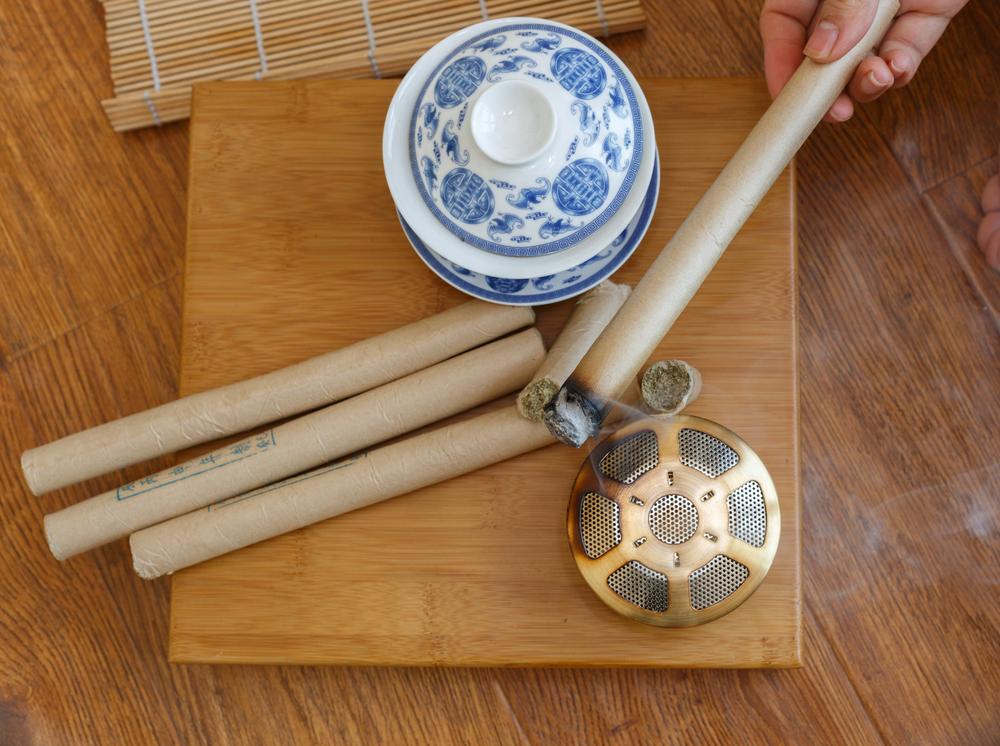Heat is an essential component of the therapeutic recommendations of Chinese Medicine. In order for our bodies to function optimally, we need warmth and proper circulation. Without it, cold sets in and circulation becomes sluggish. Whenever I meet a patient with signs of internal cold, I recommend a variety of ways they can build heat (also called yang energy) to feel better.
Signs of internal cold can include:
- Feeling cold easily (can be someone with cold extremities or they feel cold all over)
- General fatigue
- Pale tongue (this is something your acupuncturist can check!)
- Digestive problems, especially if there is difficulty with digesting raw foods and getting diarrhea easily
- Menstrual cramps and/or clots
- Chronic pain such as arthritis, pain due to standing for long periods of time or injury many years ago
- Lower back and knee pain
- Most postpartum people tend to benefit a lot from heat therapy because of having lost blood in childbirth (blood is warming) and so much “heat” from the growing baby, plus the depletion due to the physical and emotional toll of labor
Nourishing Heat for the Winter
It’s especially important to do things that nourish heat and “invigorate the blood” (help with circulation) during the cold winter months, as we tend to be less active and our bodies have to use more energy to maintain the warmth that comes so easily in the summertime. Here’s where “living with the seasons” in winter comes in- in the form of dietary and lifestyle practices called Yang Sheng. Yang Sheng translates to Nourishing Life and can include simple things you do at home on a daily basis in order to maintain long-term health and longevity.
I also want to point out that in this article, I’m focusing on ways to nourish healthy, physiological heat. Some people have excessive, pathological signs of heat. Your acupuncturist or Chinese Medicine practitioner can help you to determine if you already have excessive heat- in which case different recommendations would be in order.
Methods of Heat Therapy
Moxibustion– the primary method used by acupuncturists is called moxibustion, which is also called moxa. We use a lighted stick or bunch of Ai Ye, or mugwort (Artemisia vulgaris), to warm and stimulate some of the acupuncture points, meridians or areas of the body to build heat, intensify the effects of a particular acupuncture point and improve circulation. Most of the time it’s done in your acupuncturist’s office but I often teach patients how to perform it on themselves, especially in the colder months when more regular treatment would be helpful. I usually teach patients the pole moxa method, in which the mugwort is compressed into a stick and one end is lighted until it’s glowing like a cigar. The end of the moxa stick is held over the point or body part until warmth is felt. Your acupuncturist can give you more specifics as to which area is best, how often and how long to do it, and how to safely extinguish the moxa stick.
The practice of moxibustion creates varying degrees of smoke and a light odor since we’re burning the mugwort herb, so for people who can’t tolerate it there are other ways to build heat:
Application of Heat– this can be in the form of a hot water bottle, a heating pad, a warm bath or even using the heat from a hairdryer to warm a particular area of the body. For patients who generally need to nourish “yang energy” I primarily recommend applying heat to the lower abdomen, lower back and a point on the shin called Stomach 36.
“Cool Head, Warm Feet” – it’s an old proverb, but it describes where the warmth should “live” in your body. Warmth should primarily live in the lower half, keeping us rooted and nourished, and coolness (not cold) prevails in the upper half, keeping us “cool headed” and clear. Therefore, wearing socks and warm shoes as well as using warm foot soaks is recommended to maintain proper temperature balance.
Dietary Therapy- foods in Chinese Medicine have temperatures associated with them- for example, cucumber is cool, and chili peppers are hot. Makes total sense, right? So in the colder months you want to eat more warming spices like cinnamon, pepper, nutmeg, cardamom and foods like garlic and ginger. In addition, we recommend eating foods at warm or room temperature as well as cooking foods before eating. Avoid cold, raw salads this time of year- they’re too cooling and take more digestive “fire” to break down.
Movement and Exercise– this one should be quite intuitive- moving your body helps to warm you up and get the blood flowing! The key is not to overdo it, further depleting yourself (as with anything).
Herbs– there are many herbal formulas your acupuncturist/herbalist can prescribe that are customized to your particular condition. There are formulas more specific to arthritis and others more specific to women’s health or to digestive problems. Consult with a licensed practitioner to get a recommendation- never try to self-diagnose here! In addition to the above ideas, herbs can be safely taken over a few weeks or even months to improve your symptoms as well as prevent new ones.

